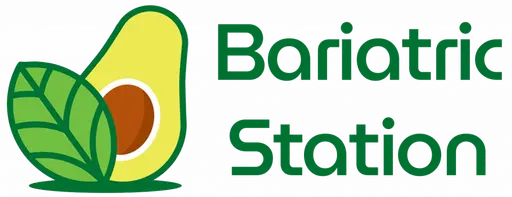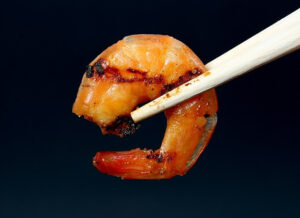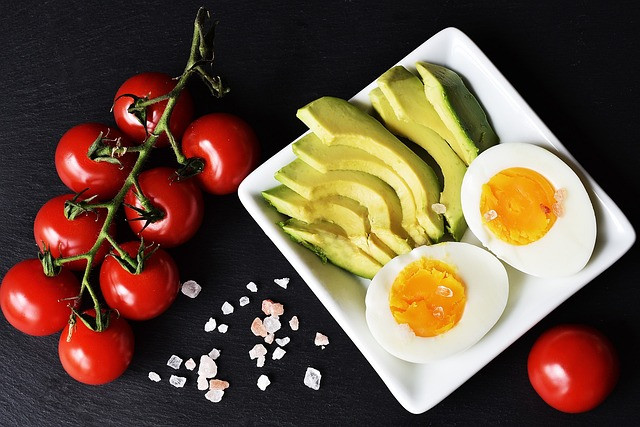For beginners, it’s always hard to understand what keto diet [1] is. We have brought to you a simplified guide on keto diet so that you can understand in the easiest possible way and have all the necessary information at one point.
A keto diet is an eating plan based on foods that are based on healthy fats, moderate protein, and very low carbohydrates. The aim is to get as many calories from fat as from carbohydrates. It is a diet that causes ketones [2] to be released into the bloodstream by the body. As the body’s primary energy source, most cells prefer to use blood sugar obtained from carbs.
Carbs from many sources are strictly restricted on a keto diet. Keto dieters often do not consume bread, grains, cereals to maintain carbs below 50 grams per day. And even some fruit and vegetables are limited since they also contain carbs. It is a myth that Keto restricts many foods; it’s just the quantity you have to adjust.
The role of Keto is to create a balance in your diet plan in such a way that it restricts carbs to less than 50 grams a day, a moderate quantity of proteins, and a high quantity of good fats. For most people, the keto diet involves making significant changes in how they usually eat.
Read also about : Keto FAQs: 21 Unique Keto Questions

How does the keto diet work?
Carbohydrates are our body’s primary energy source. [3] Without enough carbohydrates, the body breaks down fat into molecules known as ketone bodies (the process is called ketosis). Until we start eating carbohydrates again, most cells will use ketones to produce energy once you reach ketosis. The ketones become the body’s primary fuel source, and the heart, kidneys, brain, and some other muscles use ketones as sources of energy.
The shift from circulating glucose to the breakdown of stored fat as an energy source usually takes place over two to four days after consuming less than 50 grams of carbohydrates a day. A ketogenic diet is a partial fast for our bodies.
The body has no source of energy during an entire rapid or starvation state. So, for fuel, it breaks down fats, and the whole process starts; ketones provide an alternative source of energy via the keto diet.
Read also about : How to use MCT oil in Keto Diet
What is meant by Ketosis?
Ketosis is a process where the body has insufficient carbohydrates for energy to burn. Rather, it burns fat and creates stuff called ketones that can be used for energy. [4]
Keto diets can lead to low blood pressure, stones in kidneys, constipation, lack of nutrients, and increased risk for cardiac disease if not done properly.
Read also about : Keto Diet for Migraine Attacks
Signs which indicates that you are in Ketosis
Dryness of Mouth
You’ll have a dry mouth if you don’t drink enough water and obtain enough electrolytes such as salt. Take a cup of broth for one or two days and add the required water.
In your mouth, you can also feel a metallic flavor. Some people may feel thirsty as a result of water loss, because of ketosis. High ketone levels can, however, also lead to drought and electrolyte imbalance in the body. Both these reactions can cause problems.
Read also about : Is Green Tea Keto?
More Urine
The ketone may finish in the urine with acetoacetate. It is ideal for ketosis testing urinary strips. It also can help make it more important, at least from the start, to visit the bathroom.
Read also about :Is Mustard Keto?
Bad Breadth
Your breadth might smell like “fruity” or a polished nail remover. This is because our skin’s ketone body, which is considered as acetone, leaves our body. It can even come out of sweat sometimes if you find this smell. It’s provisional always.
Read also about : Bad Breath Keto, Causes, Remedies, and Prevention
Less appetite
You may be less hungry, too. Many people feel better when you eat one or two meals days and can eventually have a kind of intermittent fast. If you eat only once or twice a day, you might feel hungrier but this saves time, increases cash and weight loss.
Read also about : Overeating on Keto: Tips on How to Avoid Overeating on Keto?
Energy improvement
Brain fog, exhaustion, and keto nausea are often recorded when people start a low carb diet. But, long-term ketogenic diets also display increased concentrationand increased energy.
Once you start to consume low carbohydrates, the body must adjust to burning more fat than carbohydrates for food. A large part of the brain begins to eat ketones rather than glucose as you get into ketosis.
Read also about : Keto Diet for Seniors: A Complete Guide
Decreased Belly Fat
Ketogenic diets, in addition to traditional low-carb diets, are especially effective for weight loss loosing belly fat. A fast weight loss can occur within the first week. While some people assume that this loss is mostly the water weight. As you keep your diet so that you are in a caloric deficit, after a fast decrease in water weight, you can continue your body fat regularly.
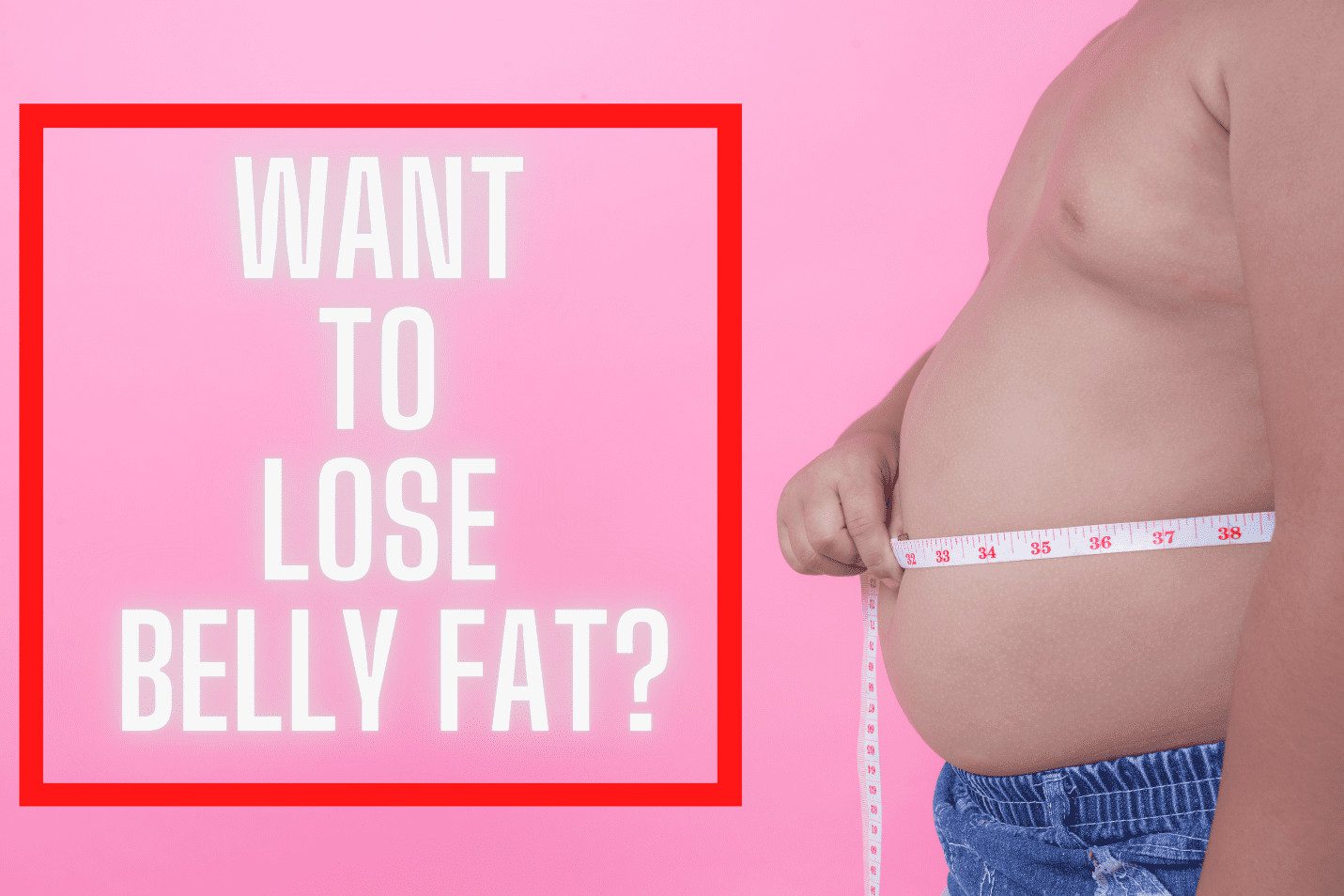
Checkout our complete Guide on : Tips on How to Lose 20 Pounds Quickly and Safely
How to know you’re in ketosis?
Ultimately, you should be in some kind of ketosis if you follow ketogenic diet guidelines and remain consistent. A variety of side effects and symptoms may occur in people with ketosis, including headaches, stomach discomfort, and changes in their sleep and energy levels. People can check the ketones’ levels in their blood, breath, or urine for a more accurate way of determining ketosis. As a very low-carbohydrate diet may not be suitable for everyone, those who want to try a ketogenic diet should always speak to their doctor first. [5]
For severe or persistent ketosis symptoms, it is also vital to seek medical advice. It is worth noting that researchers have conducted most scientific studies on the ketogenic diet for less than a year, so long-term health outcomes are not yet fully known. You can recognize whether you are in ketosis by several vital signs and symptoms. That being said, there’s no need to obsess over your ketone levels if you’re losing weight, enjoying your ketogenic diet, and feeling healthier.
Read also about : Fasting to Get into Ketosis – Keto Diet Guide
Is Ketosis Dangerous?
In order to allow the body to survive in a time of starvation, ketosis is a metabolic adaptation. Your body breaks down ketone, a form of fuel that the liver creates from fat instead of carbohydrate sugar or glucose. The diet allows you to eat 75 percent of your fat calories, compared to 20-35 percent normally, to achieve ketosis.
It also requires 5 per cent of carbohydrate calories, between 20-50 grams per day, and 15 per cent of protein calories. Ketosis requires approximately 72 hours to kick in. Low blood pressure, kidney stones, constipation, food shortages and an increased risk of heart disease might be caused by the keto diet if not done properly.
Read also about : Ketosis vs. Ketoacidosis: Myths, Facts & More
How to Start a Keto Diet or Low Carb Diet?
A low-carb diet means fewer carbohydrates and a higher proportion of fat is consumed (with adequate amounts of protein). A low-carb, high-fat diet (LCHF) or a keto diet may also be considered the same. Studies now show no reason to be feared for natural fats, and a low-carb, high-fat diet can be your friend. Just minimize your sugar and starch intake, make sure you get adequate protein, and you can eat all the fat you need to feel happy.

Your blood sugar tends to stabilize when you avoid sugar and starches, and the levels of hormone insulin fall. This helps increase the burning of fat and may make you feel more satisfied, reducing food intake and promoting weight loss naturally. Studies show that, among other benefits, a low-carb diet can make it easier to lose weight and control your blood sugar.
Read also about : Keto for Women: What you Need to Know
What are Net Carbs?
Net carbs, [6] such as erythritol and allulose, are total carbohydrates minus fiber and non-digestible sweeteners. (This does not apply to high glycemic, such as maltitol.) We do not have to count net carbohydrate fiber and certain sweeteners because they are either not broken down by our bodies, not absorbed, or absorbed but not metabolized. Some people choose to count total carbs instead of net carbs on a keto or low carb diet.
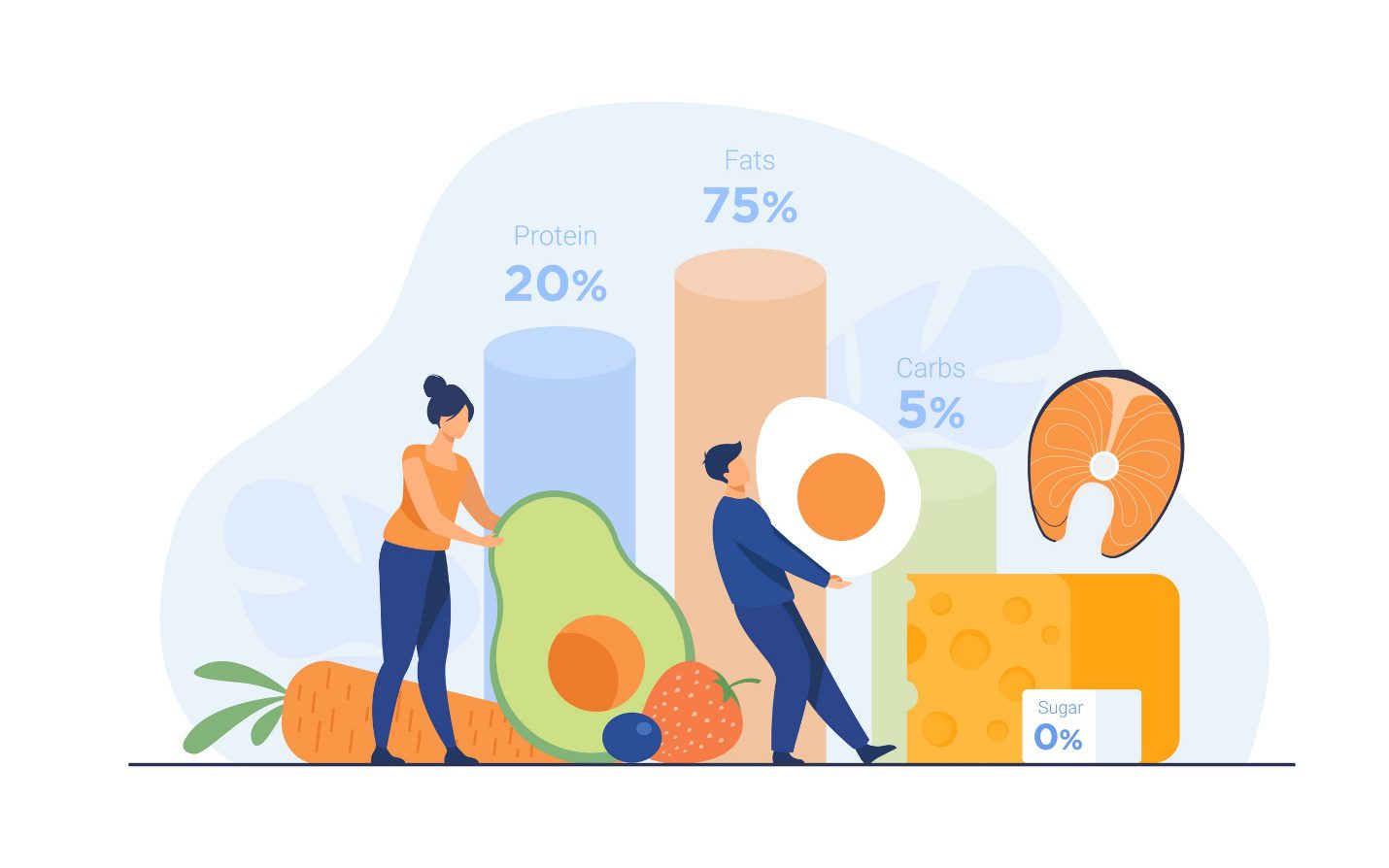
This makes it more challenging to fit leafier greens and low-carb vegetables (filled with fiber), so if you don’t get results with a total carb method, you should try this method. Before deciding to do a “Net carbs” technique, start with reducing sweeteners and low-carb treats. The naturally occurring fiber in the small intestine is not absorbed. Soluble fiber is fermented into SCFAs (Short Chin Fatty Acids) by gut bacteria, which contribute minimal calories and have neutral or beneficial blood sugar effects.
Read also about : Keto and Gut Health: Impact, Symptoms, Treatments, Foods & More
How to Calculate Net Carbs?
Understanding how your body processes various carbs can help you manage your blood sugar, weight, and overall health. One way to accomplish this is to calculate net carbs. The term “net carbs” refers simply to carbs that are absorbed by the body. Subtract the fiber from the total number of carbs to calculate the net carbs in whole foods. You can easily calculate net carbs and keep track of the number of net carbs that you eat all day long.
Subtract the fiber and a portion of the sugar to calculate the net carbohydrates in processed foods. Nevertheless, remember that it can be misleading to list the “net carbs” on food labels, and individual responses may also differ. If you find that net carbohydrate counting leads to higher-than-expected levels of blood sugar or other problems, you may prefer to count total carbs instead. The key is to eat the number of carbs allowed, no matter how you trust them, to accomplish your health goals.
Read also about : Keto vs Low Carb Diet – Breaking Down the Diet Differences
Are there different types of Ketogenic Diets?
Yes. There are indeed different types of Keto Diets. Some of which are briefly explained below:
MCT Ketogenic Diet
This follows the standard ketogenic diet outline but focuses on providing much of the diet’s fat content using medium-chain triglycerides (MCTs). [7]
Read also about : MCT Oil Side Effects: Is there any Side Effect of MCT Oil?
Calorie-Restricted Ketogenic Diet
Unless calories are limited to a set amount, a calorie-restricted ketogenic diet is like a standard ketogenic diet. [8]
Read also about : Free Keto Calculator: Determine Your Macros on the Ketogenic Diet
Cyclical Ketogenic Diet (CKD)
Also known as carb back loading, the Cyclical Keto Diet includes days in which more carbs are consumed, such as five ketogenic days followed by two higher carb days. [9]
Targeted Ketogenic Diet (TKD)
Except that carbohydrates are consumed around workout periods, the TKD is comparable to a standard ketogenic diet.
High Protein Ketogenic Diet
This diet includes more protein than a standard ketogenic diet, with a 35% protein, 60% fat, and 5% carbohydrate ratio.
Read also about : Is High Protein Diet Good for You?
What foods can you eat on a Keto Diet?
Grocery shopping can be a little hard on a keto diet. The majority of dried, packaged foods aren’t right for you, and some whole foods are slightly too starchy. Your plate will need to be filled with low-carb, high-fat foods. “What should we consume in a ketogenic diet are some of the most common problems we have. Fortunately, this is one of the most straightforward questions to answer with the right resources.
Indeed, the keto diet is perhaps the most flexible and safe way to live, so you don’t feel exhausted, depressed, or limited. And it’s not difficult to achieve it. Here are some types of foods to eat on a keto diet:
- Meat
- Unprocessed Foods
- Low-Carb Dry Fruits
- Non-starchy Vegetables
- Seafood
- Eggs
- Cheese
- Oils
- Nuts and Seeds
- Cream and Butter
- Chocolate
Read also about : Foods to Avoid on Keto (and What to Choose Instead)

Practical Keto Diet Guidelines
You should eliminate some foods or risk a full-blown cheat day, no matter the reasons for going to Keto! It can be exhausting for your brain to think about which things to avoid and what’s acceptable and unsuitable for Keto. Here are some of the keto foods that you can avoid.
Read also about : Keto on a Budget: 11 Life Hacks That Can Save You Tons of Money
Bread
In many countries, bread is a necessity, and carb counts differ depending on portion sizes and ingredients, but the high average carb counts for typical breads will surprise you. So, it is always better to avoid these.
Sugar
Added sugar is obviously off the keto menu, yet you’d be shocked by how many sneaky sugars, from salad dressings to snack bars, can be added to please your taste buds.
Read also about : Best Sweetener for Keto: Can we add Sweeteners in Ketogenic Diet?
Fruits like
It’s best to avoid or restrict extra sweet, starchy, or dry fruits with higher carb counts on a low-carb diet, such as:
- Banana
- Raisins
- Mango, sliced
- Dates
Check out our list of foods that are not allowed in Ketogenic diet.
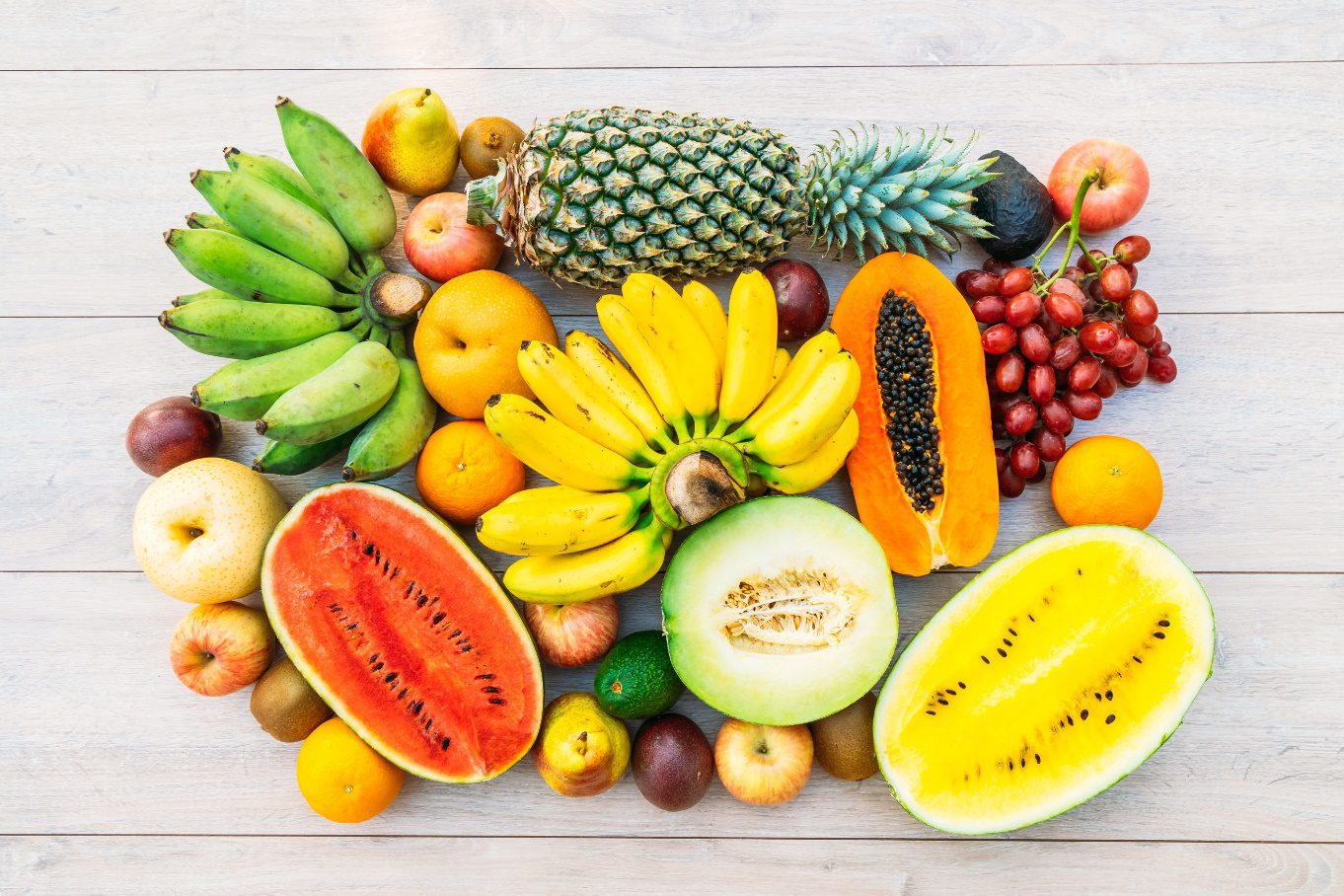 Tips for eating out on a Keto Diet
Tips for eating out on a Keto Diet
Everyone, especially in the summer, loves going out to eat. It’s a thing of culture. Summer is full of activities, and most of them are related and going out to eat, weeknight parties, birthday parties, your cousin’s graduation party, and then not to forget “Vacations.”
So, what can you do now? You can’t refuse any offer to go out merely because you’re on a “diet.” You will have to find out how to apply this to your social life if you want this to be a healthy lifestyle option, which is a whole lot simpler than you would imagine.
- Check out the online menu before you go to a restaurant, and plan what you will order.
- If you order a salad, always inquire about the dressing components.
- Go for the protein when it comes to ordering the main courses.
- Do not fill your plate with unnecessary foods
- Try to go for healthy fats
- Take a proper look at drinks as they might have high sugar content
Read also about : Clean Keto vs. Dirty Keto: Complete Guide

Vegetables on the Keto Diet
By seasoning cooked vegetables with butter, you can use Keto vegetables as a medium for fat. Better still, sauté or roast in lard, coconut oil, avocado oil, or ghee. Try not to go overboard with fat when you want to lose weight.
You will want to let your body burn excess body fat instead of added extra dietary fat for the best results. In this scenario, to stop hunger, only eat enough necessary fat. Here are some examples of vegetables that are keto-friendly to be included in your meal plan.
- Asparagus
- Green Beans
- Avocado
- Eggplant
- Broccoli
- Kale
- Cabbage
- Lettuce
- Cauliflower
- Olives
- Cucumber
- Peppers
Read also about : Keto for Vegetarians: Dos and Don’ts of a Vegetarian Keto Diet

In non-starchy vegetables, the net carbs differ from 1 to 8 grams per cup. Vegetables are nutrient-dense, flexible, and can help decrease the risk of illness. The Good news is that now Vegans can also try keto diet. Here is a complete guide for Vegans.
Fruits on a Keto Diet
If you’re a KETO fan you must have learned that fruits must be avoided. 80% Fruit and berries are high in carbohydrates. People’s reservations about a keto diet are high and there may be many other diet plans but many people are also keen to adopt the keto diet plan as adapting and becoming health-conscious is one of the world’s most popular and cost-effective diet plans. You can see our complete Guide on fruits to eat and avoid in keto diet.
- Blueberry
- Blackberry
- Avocado
- Kiwi
- Watermelon
- Cantaloupe
How much should you be eating a day?
This will rely on various variables, but let’s keep it easy to start with instead of getting overwhelmed.
Read also about : Keto Cheat Sheet: Guide To Make Ketogenic Diet Easier
Macros on Keto
When you start a Keto diet, a few questions might pop up in your head. What are my macros, and do I need to know my keto macros?
You don’t have to work out your exact ‘macros’ for beginners; you can start by instantly substituting higher fat and lower carb meals for your meals.
Calories per day on Keto
You will get an idea if you know roughly how many calories a day you can eat. Then if you need 1500 calories a day to consume, you should eat:
125 grams of fat
75 grams of protein
40 grams of Carbohydrates
Read also about : Keto Calories: How much calories are allowed in Ketogenic Diet?
Total Daily Energy Expenditure
TDEE is how much energy your body needs, including your exercise, burns in a day. If your TDEE is 1700 calories, you burn about 1700 calories through your daily activities, from sleeping to going to the gym.
Potential Keto Diet Side Effects
The keto diet is unique, unlike other trendy diets, as it forces the body into an alternative, normal metabolic state called ketosis. When this occurs, you can reliably expect a few adverse side effects, especially those that come with the “keto flu.” But other side effects only happen when individuals incorrectly follow the keto diet, generally by not consuming healthy, nutrient-rich foods as part of a high-fat, low-carb diet.
Constipation
When you cut out common fiber sources from your diet, what’s likely to happen? Constipation. A 2018 study involving children on the keto diet found that affecting about 65 percent of them, daily constipation was prevalent among participants who did not follow all the keto diet rules.
Muscle loss
Some evidence shows that the keto diet, which contains muscle protein, may contribute to the loss of lean body mass. The deterioration of muscles on a ketogenic diet is an ongoing area of study. Few studies show that even though they continue resistance exercise, individuals on the ketogenic diet lose power.
This may be due to the fact that after exercise, protein alone is less successful for muscle building than protein and carbs together. That’s why there are different types of keto diets like Targeted Keto, which you can follow according to your needs.
Read also about : Keto Protein: How much proteins do you need in a Ketogenic Diet?
Nutrient Deficiencies
When the intake of carbohydrates is insufficient, fiber consumption often appears below. This doesn’t come as a surprise when you know that your diet reduces fruits, whole grains, and starchy vegetables. This may contribute to one particularly unpleasant side effect.
How to reduce these side effects?
Minimizing Constipation
Add extra fiber to your diet. You can use ground flaxseed, chia seeds or acacia fiber to your meals in addition to consuming more fibrous foods to help increase your daily count.

Drink lemon water + vinegar with apple cider. Create a cup of hot lemon water mixed with one teaspoon of apple cider vinegar when you first wake up. SOURCE
Want to get rid of Constipation? Here is our Complete Guide on Keto Constipation
Minimizing Muscle Loss
Understanding the metabolic baseline is the first step to burning fat while retaining muscle. This includes the number of calories you need per day to maintain your current weight, as well as the number of calories you usually consume each day and the proportion of carbohydrates, fat, and protein.
- Do it slowly, and do not lose nutrients if you’re reducing calories.
- Include a ‘cheat day’ with higher calories once a week.
Minimizing Lack of Nutrients
The ketogenic diet will provide you with all the micronutrients your body requires if you follow it correctly. Apart from the initial two-week induction period where your body flushes out vital electrolyte minerals such as sodium, calcium, potassium, and magnesium.
When monitoring the consumption of micronutrients to help avoid severe symptoms of keto flu, the first two to three weeks on the ketogenic diet matters most. Just because you limit carbohydrates doesn’t imply you’re going to miss those minerals and vitamins.
Stop eating calories from foods with little to no micronutrient content. Although leaving you with a possible micronutrient deficiency, foods such as butter and vegetable oils will fill you up. Try buying organic food instead, as it contains more nutrients, vitamins, and minerals that the body absorbs more quickly.
Does your brain need Carbs?
This is one of the most popular misconceptions facing someone who finds a low carbohydrate diet to be embraced. Many individuals who follow a low carbohydrate diet comment on increased mental clarity or “brain fog” enhancement and certainly do not miss the effects on their brain of processed sugars.
Read also about : Keto Diet Effect on Brain Health
Your brain still needs a supply of energy.
The brain is one of the body’s most vital and energy-intensive organs and, as such, needs a constant, consistent energy supply. The brain cannot get energy directly from fat, unlike muscles and other organs. The brain almost entirely gets its nutrition from carbohydrates, in the form of glucose, on a typical Western diet.
Suppose a low carbohydrate or ketogenic diet is followed. In that case, the body typically depletes its glucose (glycogen) reserves and instead switches to ketones that are broken down from fatty acids as a source of energy. Ketones are capable of supplying up to 70% of your brain’s energy needs. However, to work and survive, specific brain cells do require glucose.
Ketogenic Diet for Weight Loss
A diet with low carb content is Keto Diet. You should have the idea by now to obtain moderate protein, high fat, and fewer carbohydrates. When you start taking more fat content, the body releases the stored fat as there is plenty of supply coming in.
You cut out the most calories, such as sugar, soda, pastries, and white bread that can be quickly digested. Eventually, your body runs out of fuel (blood sugar) fast when you eat less than 50 grams of carbs a day. It usually takes three to four days. Then you will break the protein and fat down, and you will lose weight with this energy.
The ketogenic diet is a short-term diet focused on losing weight rather than finding health benefits. People typically use a ketogenic diet to lose weight, but it can also help treat medical conditions such as epilepsy.

It may also benefit people with heart disease, certain brain disorders, and even acne, but more research is needed in these fields. First, speak to the doctor about whether a ketogenic diet can be tried safely, particularly when you have type 1 diabetes.
I’m dying to know: is this keto diet going to help me lose weight?
For most people to start using stored fat as food, based on body size, carbohydrates’ daily consumption must be reduced to less than 50 grams. (A medium-sized banana has around 27 grams of carbs, for comparison.) But this is a highly individualized process, and to start producing enough ketones, some people need a more limited diet. A condition of ketosis usually takes two to four days to achieve (when fat becomes a primary source of energy).
There is no lack of diets that are keto-inspired. But a proper ketogenic diet is distinct and demands that up to 90% of your daily calories come from fat. That is also difficult for individuals to maintain.
However, a study has shown that, compared to a calorie-reduction diet, people can reach quicker weight loss with a keto diet. People often find it hard to sustain weight loss in a keto diet; here is a complete guide on how to sustain weight loss after the keto diet.
Choose healthy sources of fat and protein, such as olive oil, avocados, and nuts, if you try a keto diet to begin weight loss (almonds, walnuts). But turn to a reduced-calorie Mediterranean-style diet after a couple of weeks and improve your physical activity. In the long term, this will help control weight loss.
Can the ketogenic diet help to burn more calories?
A particular amount of calories is given by any macronutrient:
- Carbohydrate: 4 calories per gram
- Protein: 4 calories per gram
- Fat: 9 calories per gram
You may have noticed that it’s much more filling, even though fat contains more than twice as many calories as carbs. The most filling macronutrient is commonly called protein, but it is mainly used for cell repair and muscle maintenance.
It is not very useful as an energy source since it must first be converted to glucose in the liver to be used as fuel. In butter, ghee, lard, and most oils, 100 percent of the calories come from fat. The calories in most foods, however, are a blend of carbs, protein, and fat.
Low-carb diets regularly surpass low-calorie weight-loss diets, except in studies where calories are not deliberately counted or limited during low-carb consumption. Although in weight management, calories are essential, they need to be considered in the light of hormones and human actions.
What if I am always feeling tired on Keto?
Energy levels are an immense health and longevity predictor, a lack of which is a big reason why people switch from a typical western diet to a ketogenic diet. When it comes to making healthy decisions, exercise, sleep and job performance, energy levels are important, all of which are made even more difficult if you suffer from low energy levels.

There is a period of adaptation that has to take place during the starting stage of a ketogenic diet, where the body switches from burning glucose as fuel to fatty acids and ketones. In an individual basis, this adaptation period can vary, but it may take up to several weeks before energy and other markers are back to normal levels, and typically higher.
Your levels of fat oxidation will increase throughout the adaptation phase, and your levels of carbohydrate oxidation will decrease; fatigue and other signs of an energy shortage are not unusual for this purpose.
Read also about : Keto Tips and Tricks: All Necessary Information about Keto Diet
How long does it take to see results on the keto diet?
The outcomes you may expect depend on your ability to adhere to the diet while on Keto. If you cheat now and then, losing no more than 1 pound per week is realistic. It can be completely rewarding to lose weight on Keto, but you have no other choice but to be disciplined. If you follow it correctly, you will begin to note the beneficial effects of Keto on your weight, fat percentage, and overall health.
Read also about : Keto Before and After Weight Loss Transformations
Does the ketogenic diet offer long-term benefits?
The present research shows the beneficial effects of a long-term ketogenic diet. It substantially decreased the patients’ body weight and body mass index. Also, triglycerides, LDL cholesterol, blood glucose levels dropped, and HDL cholesterol levels increased.
There were no significant side effects in patients when a ketogenic diet was administered for a comparatively longer period of time. Therefore, the present research indicates that it is safe to use a ketogenic diet for a longer period of time than previously seen.
Keto and Cancer
Cancer and several types and subtypes of cancer can strike, including organs, tissue, bone, and blood. And from one person to the next, same cancer can behave differently. Research so far shows that several things can depend on whether and how the keto diet helps combat cancer.
Glioblastoma, a very severe brain cancer, has provided some of the best evidence of Keto’s potential benefits. Yet other types of brain cancer also seem to get benefited. The proof that a high-fat, low-carb diet will help prevent solid prostate, breast, stomach, and liver cancers has been minimal.

But researchers have ruled out the possibility that a keto diet may potentially worsen your cancer by promoting tumor growth. And very low-fat diets have shown that the risk that some forms of breast cancer may return is lower.
Some keto-friendly foods can increase the risk of cancer, such as red meat. Because of the small food options, it’s also a rigid diet to adhere to. But your doctor may feel comfortable maintaining your keto diet during treatment, mainly if your cancer is aggressive or in the early stages if you receive close supervision and frequent checkups with a diet counselor. Informal tests have shown that it is unlikely that you will have any significant adverse keto reactions.
Keto Improves Heart Health
Even modest weight loss on the keto diet can help reduce cardiovascular risk factors such as obesity, high blood pressure, lower LDL (‘bad’) cholesterol, and higher HDL cholesterol, which helps protect against heart disease a 2017 report. A keto diet may also decrease elevated blood sugar linked to artery-damaging inflammation.
Substantial improvements in mice with reduced cardiac MPC expression were associated with high-fat, low-carb diets, which can induce ketosis. The researchers discovered that the “reverse modeling” of failing hearts was correlated with following such a diet for just three weeks. The keto diet can also contribute to improved human cardiac output. There is also additional research underway.
Read also about : Keto for High Blood Pressure
Keto Protects Brain Functioning
The ketogenic diet causes mitochondrial genes and genes used in metabolism to be upregulated, thus stimulating mitochondrial mass. These improve brain cells’ ability to protect them from strokes and neurodegenerative disorders such as Alzheimer’s disease.
Research showed that children with epilepsy following a ketogenic diet had increased alertness and cognitive functioning compared to conventional antiepileptic therapeutics. The Ketogenic diet was also found to help treat other central nervous system (CNS) conditions, such as Alzheimer’s disease, Parkinson’s disease, and traumatic brain injury (TBI).
More research into the ketogenic diet has been suggested to understand its possible benefits for traumatic brain injury and its function in neuroprotection. Overall, this would help facilitate the functioning of the brain and utilize its resources more effectively.
Keto Controls Seizures
Several studies have also shown that for many children whose seizures cannot be controlled by medicine, the ketogenic diet reduces or eliminates seizures. About half of the kids who go on a diet have at least a 50% drop in their seizures. Some kids have become seizure-free, usually 10-15 percent. Usually, antiepileptic drugs are often taken by people who try the diet for this reason. However, for children with refractory epilepsy who do not respond to medical care, the keto diet can be incredibly successful.
For teenagers and adults, adjusted variants of the diet may be more acceptable. It is important to remember that anyone using a keto diet should be supervised by a medical professional to help manage epilepsy. This is to make sure that the person is safely dieting and having the most benefits. For infants and other children, medical supervision is essential.
Read also about : Keto diet and MS: Does it help in Multiple Sclerosis?
Keto Diet for Prediabetes and Type – 2 Diabetes
A ketogenic diet may help some type 2 diabetes individuals because it helps the body maintain a low but healthy glucose level. The lower dietary consumption of carbohydrates will help reduce large blood sugar spikes, decreasing insulin’s need. That depends on your type of diabetes. In general, overweight individuals with type 2 tend to achieve reasonable outcomes comfortably.
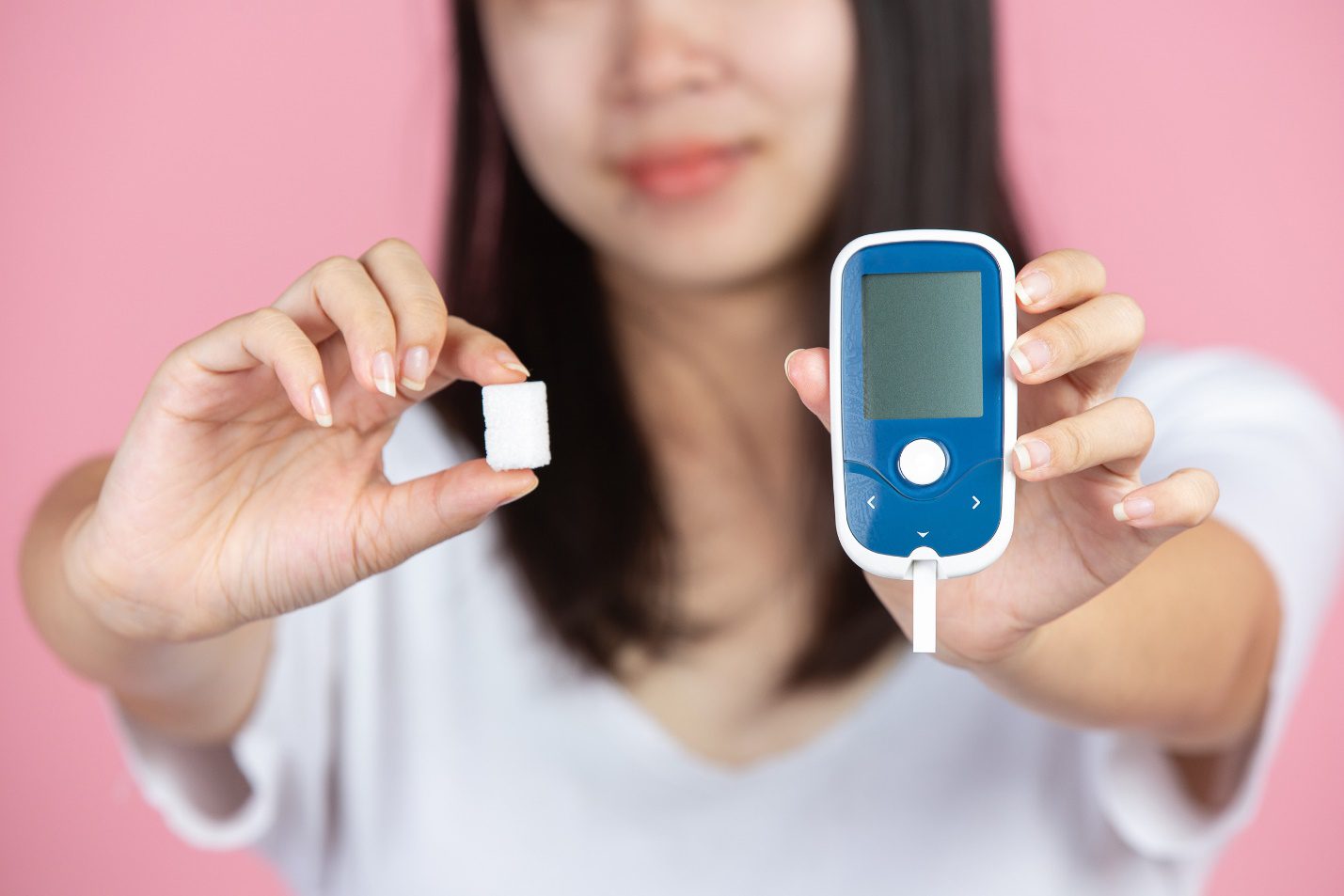
You must speak to your doctor first if you have type 1 and try a keto diet. You’ll have to monitor your health closely and check for symptoms of ketoacidosis. It’s a good idea to work closely with your doctor with any form because you may need to change your medications.
Ketogenic diets can help lower the level of blood sugar. As such, certain people who also follow a ketogenic diet with type 2 diabetes may minimize their need for medication. Here is a complete guide on the Keto diet for prediabetes.
I have covered more of the keto diet topics , check the articles below, ill keep updating this list when i add new topics.
- Myths, Truths, and Alternatives of Maltodextrin on Keto
- Is Cranberry Juice Keto Friendly?
- Is Honey and Stevia keto Friendly? Myths and facts about KETO sweeteners
- Keto Diet for Lactose Intolerance
- Keto Diet for Fatty Liver Disease
- Keto Diet for Candida: Is Ketosis Bad for Candida?
- Are Tomatoes Keto-Friendly? Benefits Carbs, & Nutrition
- Does Drinking water Reduce Ketones?
- How Important is Fiber in Keto Diet?
- Are Lentils Keto? Myths, Facts, and Substitutes
- Almonds in keto diet: How to Use Almonds in Ketogenic Diet?
- What are Fad Diets and How Do They Work?
- Complete Guide to Carnivore Diet
- Eating Carbs after Ketosis: Is it a Good Idea to Eat Carbs after Ketosis?
- Healthy Fats Keto or a Low-Carb Diet?
- Are You Ready for a Keto Challenge?
- Suppress Appetite: How to get Less Hungry While on a Keto Diet
- Diet Depression: Correlation between Diet and Depression
- The Science behind making Easy Keto Lunches
- Myths and facts about Keto Hair Loss
- Keto Desserts: Are Desserts allowed on Keto?
- Keto Meal Preps: Basic Meal Prep Idea
- Keto vs Atkins: Similarities and Differences between Keto Diet and Atkins Diet
- Keto Diet Memory Loss: Does Keto Diet Aid Recovery of Memory Loss?
- Lazy Keto : Foods to Eat & Avoid, Benefits, Drawbacks & More
- Dairy on Keto: Is it allowed to have dairy on Ketogenic Diet?
- Ice Cream Keto: Can we eat Ice Cream in Keto?
- Keto and Menopause: What You Need to Know
- How Many Grams of Fat on Keto: Good Fats vs Bad Fats
- Keto Diet for Men: Benefits, Weight Loss & More
- What are 10 Best Things You Can Eat on a Keto Diet?
- Keto Diet Ketones in Urine
- Amazing Benefits of Ketosis: Is Keto Diet Good for Diabetics?
- Your Guide For a Keto Diet to Lose Weight
- How to Cure Keto Diet Stomach Pain
- What is the Cyclic Keto Diet and What are Its Benefits?
- Here Are the Keto Rash Stages You Can Go Through While on a Keto Diet
- Can You Get Keto Mood Swings from the Keto Diet?
- Not Losing Weight in Ketosis
- Can the Keto Diet Lower a1c For People With Diabetes?
- How to Design Your Own 7 Day Keto Meal Plan
- Is Keto Bad for Kidneys? – Busting 2 Absurd Myths
- Does Keto Work – The Shocking Answers
- Easy Guide on How to Keep Weight Off After Keto – 8 Tips
- Defining Ketosis and its Potential Benefits
- Is a Targeted Ketogenic Diet Better For Your Health?
- Is Keto Max Safe For You? Here Is Everything You Need to Know
- Does Keto Lower Blood Pressure?
- What are Ketosis Cortisol Levels? How Can You Manage Them for Better Health?
- How to Ease into Keto?
- Keto Diet Cholesterol
- Keto and Weight Lifting – An Authentic Guide with 6+ Proven Tips
- How to Lose Weight Fast Keto? – 10 Powerful Tips You Didn’t Know
- Pros and Cons of Keto Diet – 5+ Epic Facts You Should Know
- Coconut Oil for Keto – Powerful Tips with 3+ Pros and Cons
- What Does 20 Grams of Carbs Look Like – Astonishing Look at 13 Snacks
- Keto Net Carbs or Total Carbs
- How Much Does Keto Cost: How Much Will You Have to Spend to Stick to the Keto Diet?
- The Keto Diet Eliminates What Foods?
